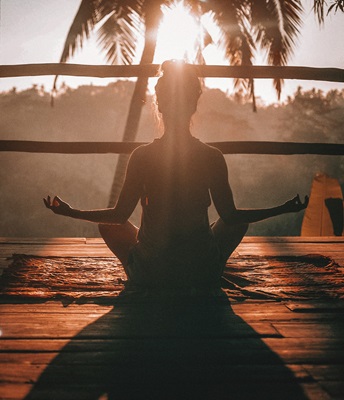A Simple Relaxation Technique: Slow Breathing
By Tom Horvath, PhD
Although the following information is very basic, I hope it is a useful reminder for you. You are breathing all the time. With a few minor adjustments breathing can become a powerful tool to support yourself.
Start by closing your mouth and breathing through your nose. Probably this step can happen immediately. You can also if you wish focus on the sensation of the air coming in and out of your nose. That focus can also be a helpful distraction technique.
- Begin to slow down your breathing. It may take many breaths to achieve a significantly slower pace. However, if you can get down to 6 breaths per minute (one every 10 seconds) you have a strong likelihood of lowering your stress level. If you are not sure how to accomplish slowing down, start counting your breath in and breath out, aiming for 5 seconds (or more) for each.
- Simultaneously lower the volume of air you are breathing in. “Slower” and “less air” work together.
The above efforts will generally produce positive results for almost anyone. If you are HIGHLY anxious when you begin you may need another starter relaxation activity, such as talking with someone, exercising, or waiting. At some point you will become calm enough to focus on breathing.
You may prefer to begin slow breathing by taking one or a few big breaths. However, keep in mind that many big breaths equal hyperventilation, which often leads to feeling panic (not where you want to go).
The following “advanced breathing” techniques may also be useful to you. See how slow you can get your breathing!
- Use your abdomen to breathe, not your chest. If this idea is new to you, do an internet search for “diaphragmatic breathing.” Briefly, rather than moving your chest, you push your diaphragm down (toward your pelvis), pushing the organs below it forward (or out). An easy way to practice is to lie on the floor and focus on getting your belly to move up and down. One feedback method is to put a belt around your lower chest, to let you know when it starts to move. Another, while seated, is to lean forward and clasp your forearms behind your back as far up your arms as you can. You can still breath with your chest, but you will have to work harder to do so, and “belly breathing” may seem easier.
- Focus on pulling your breath into your lower back. The lungs go down farther there, now that you are opening space for them by lowering your abdomen. You can focus on feeling the breath going all the way down.
- Change your rhythm from in-out to in-out-pause. You can breathe in for several seconds, breathe out for the same number or longer, then do nothing. If you are in a comfortable position, during that pause every voluntary muscle in your body can be at rest. What a great relaxation experience! These pauses can last for 10 or more seconds and get your breathing down to 2-3 breaths per minute (an outcome I have observed people achieve with minimal practice). At that pace you will not be anxious! You can also find reports of MUCH slower breathing.
Whether you choose to use the top three ideas only, or all six, slower breathing is available anytime, anywhere, and could make a significant difference in your life. Not only for when you are anxious or other strong emotion, but also when you get a craving or impulse.
Liked this article on slow breathing as a relaxation technique? You might also be interested in: Progressive Muscle Relaxation

 Start by closing your mouth and breathing through your nose. Probably this step can happen immediately. You can also if you wish focus on the sensation of the air coming in and out of your nose. That focus can also be a helpful distraction technique.
Start by closing your mouth and breathing through your nose. Probably this step can happen immediately. You can also if you wish focus on the sensation of the air coming in and out of your nose. That focus can also be a helpful distraction technique.